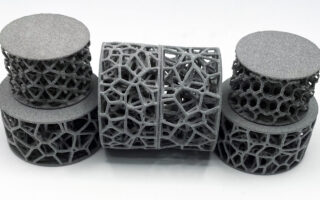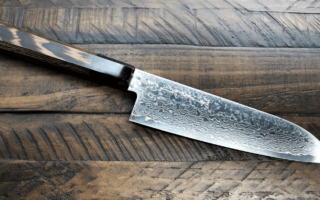If you are a knife enthusiast, I am sure the question “Who made the first knife ever?!” popped in your head at least once. When I think about it, I have so many questions- exactly who came up with the idea of making a knife, how did the first knife look like, what is the oldest pocket knife, how did they come up with the handle design, and the details, etc.
If your mind wonders like me too, we have got you covered with all the information about the history of knives.
History Of The Knife
The oldest pocket knife ever found is the Chachapoyan knife, and it’s estimated to be at least 9,000 years old. The age of this knife is uncertain, but we can be fairly sure it’s a lot older than the modern pocket knife.
In the late 1800s, the oldest pocket knife was discovered in Hallstatt, Austria. It was made from a single blade with a bone handle.
Hallstatt is a village in present-day Austria. The Hallstatt culture was the dominant Western and Central European culture of the late bronze to early iron age from the 8th to 6th centuries BC.
The Viking culture was mainly agrarian and relied on agriculture for survival. But the Viking culture was also very advanced in metalworking, and the Vikings had a salt mine that helped bolster the local economy by creating a trade good that was in demand throughout the wider region.
Excavations have uncovered many rich sites to investigate, and burial ground has yielded a treasure trove of artifacts that give us a window into this ancient culture.
One of the most interesting archaeological finds is the Hallstatt knife. It’s believed to be one of the earliest folding knives and looks very similar to the knife you’d see today.
The pattern looks like a Hawksbill and has a metal bolster and a grooved bone handle to safely receive the blade.
Knives of this quality and sophistication were used 2600 years ago. It’s fascinating to think about how long these knives have been around and how many different types of knives there are. But it’s important to realize that these knives were not the “first” folding knives. These were definitely sophisticated tools and not the first of their kind. Rather, they were just the oldest we have found in the archaeological record.
This knife is a fine example of a high-quality kitchen knife crafted by a master bladesmith.
The next major advance in knife technology was the pocket knife. During the Roman Empire, many bronze friction folders were discovered.
Where did the knife originate?
Knives are very old. Archaeologists have discovered many knives can blade in ancient Roman cities.
Knives from the Ancient Roman era had bone handles. These knives are rare but archaeologists have found them in several Roman cities.
Handles have been made out of various materials, including bone, wood, and metal.
How the word “Knife” Originated?
In the year 1,400, the word knife was borrowed into English from the Old Norse word “kníf”, meaning “a sharp, pointed weapon for cutting or hacking.” The word knife most likely entered English vocabulary about 1100.
Early 1st Century Knife History
In Prehistoric times the use of knives and other sharp objects such as spears, arrows, swords, axes, and maces, as tools and weapons, is well documented. The earliest metal knives were made in the Bronze Age. The first metal daggers were symmetrical double-edged daggers, made from copper. The first single-edged knife was made in the bronze age 4000 years ago.
During the Roman Empire, many bronze friction folders were discovered. They didn’t have locks or springs, but rather used friction to stay closed and required pressure from the hand or thumb to stay open.
After that in the early 200, swiss army knives were made by the Romans. This is a replica of the Roman knife invented in the 5th century AD. It includes a spoon, blade, spike, fork, spatula, and pick. It was probably owned by a wealthy traveler.
Did Knife Come Before Sword?
Knives have been around for a long time. In fact, a stone blade knife is one of the first tools to make use of metal. They’re also among the first tools to be used for self-defense, and they continue to be an important tool to this day.
One of the oldest knives was called a messer, and it evolved into a machete.
Early 1600 to 1990 – A Brief History of Knife
The pistol grip Gully knife was a pocket knife that was used for fighting. Examples have been found dating back to the early 1600s. It is thought that the name “Gully” comes from the Scottish Gaelic word for gully, which refers to a small valley between two hills.
However in late 1600 the knife most associated with the Spanish Civil War is the Navajo, a knife introduced during the war. It was used for many things but was mainly used as a tool. However, years later it received a locking mechanism making it one of the first Lockback knives created.
It’s believed that the butterfly knife was first invented in the French in early 1700. They called it a balisong, and it was used for hunting. The Philippine version of the butterfly knife is known as the sinturon. But the Philippines say the Balisong knives are made by hand in the Philippines using only locally available materials, and they are known for their high quality and unique designs. It is a double-edged, short, single-handed knife made from a single piece of steel.
Switchblades are typically made from stainless steel, with a spring-loaded blade that is accessed by the push of a button. The infamous Italian stiletto style became popular in the United States after World War II. Their popularity soared during the 1940s in America when they became very popular with gangsters and assassins.
In the late 1800 the Japanese higonokami knife was invented. The Japanese higonokami knife is a type of friction folder. It’s a very popular knife for a variety of applications, including filleting and general cutting. They were hand-forged and very popular in Japan for many years, but were banned.
In 1950, the Schrade Stiletto switchblade was designed to look like a knife and is primarily used as a weapon. It’s unlike other pocket knives because it’s primarily used as a weapon.
And then later in 1990, tactical folders, also known as pocket knives or utility knives are invented by Bob Terzuola for hunting and for the outdoorsman. They’re designed to be more functional than traditional folding knives and are easier to handle. They’re usually made of high-quality materials, such as stainless steel or carbon steel, and are often built to last a lifetime.
When was the date added to the case of a knife?
The dotting system changed in 1970. The U.S.A. was added to the letter S and a new numbering system was used. These differences are the “lightning” form of the letter S and the dots being placed above the U.S.A.
The real date was stamped on the tang from 1990 to mid-1993.
How long has Benchmade Knife Company been around?
Benchmade has been in business for over 30 years, and they’ve been dedicated to making the best knives for the jobs people want to do since day one. They are always on the lookout for ways to improve the knife experience, and their dedication to customer service is unmatched.
Benchmade is the story of a company that started out as a knife maker in the 19th century and has been crafting knives ever since.

Hi, my name is Taras Kulakov and I’m a knife enthusiast. I have been collecting knives for over 30 years and I’ve owned literally thousands of different models over that time. My goal with this site is to share some of what I’ve learned about knives. You can find more info about Taras Kulakov here.




